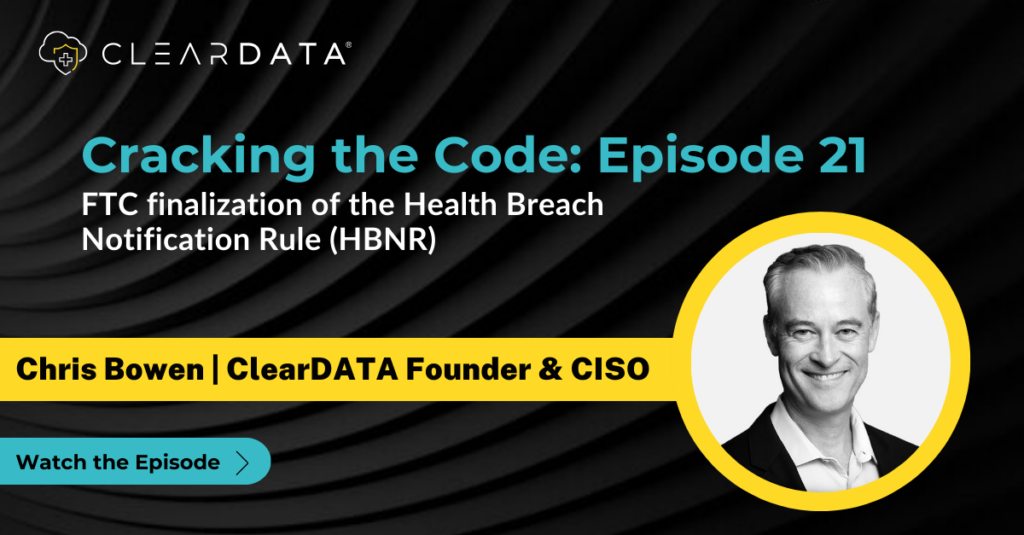Healthcare Cloud Migration Strategies: Security & Compliance Best Practices
Since the onset of COVID-19, there has been a significant increase in cloud migration among businesses. For healthcare leaders, embracing the cloud offers providers unparalleled opportunities to boost efficiency, scale operations, and elevate patient care.
For many organizations, though, the process is more difficult than they expected. A study from McKinsey recently reported that 80% of CIOs don’t see their businesses as agile or modernized as they had hoped for when beginning their cloud migrations.
Still, you can (and should) navigate the complexities of cloud migration with confidence. We’ll explore actionable strategies to tackle common issues head-on, from safeguarding patient data against cyber threats to meeting stringent regulatory standards. Discover how moving to the cloud can revolutionize your healthcare practice.
“The cloud services companies of all sizes…The cloud is for everyone. The cloud is a democracy.”
– Marc Benioff, CEO – Salesforce.com

The Complexity of Healthcare Cloud Migration
Healthcare cloud migration isn’t merely a technical upgrade; it’s a comprehensive transformation that touches every part of an organization. In healthcare, the stakes are especially high due to the sensitive nature of patient data and the rigorous regulatory requirements that govern its use and protection. It means that healthcare providers have to walk a fine line between innovation and continuously ensuring cloud security and compliance measures are working effectively.
Healthcare Cloud Migration Challenges
- Data Security: Ensuring the confidentiality, integrity, and availability of patient data throughout the migration process.
- Regulatory Compliance: Adhering to laws and regulations, such as HIPAA, which dictate stringent requirements for data protection and privacy.
- Risk Management: Identifying and mitigating potential vulnerabilities and threats associated with cloud environments.
- Resource Allocation: Allocating sufficient resources—both human and technical—to manage the migration and ongoing maintenance.
- Change Management: Effectively managing the transition for all stakeholders, including staff training and communication.
Key Benefits of Healthcare Cloud Migration
For technology executives to remain competitive, it’s crucial to enhance their organization’s cloud strategies by establishing the right organizational structure, fostering skill development, and implementing effective processes to unleash value.
- Increased Efficiency: Operating in the cloud streamlines operations by automating processes, enabling real-time collaboration, and optimizing resource utilization through scalable infrastructure that adjusts to demand. This reduces downtime and enhances productivity, allowing teams to focus on core tasks instead of managing hardware.
- Scalability: Easily adjusts resources to meet changing demands. Specifically, the cloud allows businesses to quickly add more computing power during peak times, such as an online retail store managing increased traffic during a holiday sale, without the need for extensive hardware investment.
- Enhanced Collaboration: Facilitates seamless teamwork across various locations.
- Cost-Effectiveness: The cloud reduces overhead costs by eliminating the need for physical infrastructure and maintenance while minimizing capital expenditure through pay-as-you-go pricing models. This allows businesses to scale resources up or down based on demand, ensuring they only pay for what they use, ultimately leading to significant savings.
- Improved Service Delivery: This ensures faster, more reliable access to critical applications and data. For example, implementing cloud services can enhance access times, allowing teams to quickly retrieve information necessary for decision-making.
- Data Security: This provides robust protection against cyber threats and unauthorized access. For instance, encryption methods such as AES (Advanced Encryption Standard) protects sensitive data both at rest and in transit. Furthermore, multi-factor authentication (MFA) adds an extra layer of security, making it harder for unauthorized users to access critical systems.
“Cloud computing is often far more secure than traditional computing, because companies like Google and Amazon can attract and retain cybersecurity personnel of a higher quality than many governmental agencies.”
-Vivek Kundra, Former Federal CIO; Current President & COO of project44

Advice for a Secure and Compliant Cloud Migration in Healthcare
Conduct a Thorough Risk Assessment
Would you start a home renovation without looking at your blueprints? Probably not. Similarly, before starting a cloud migration, healthcare providers shouldn’t overlook the need to conduct a comprehensive risk assessment. It will help identify potential vulnerabilities, threats, and compliance gaps that could impact patient data security. By understanding these risks, organizations can develop targeted strategies to mitigate them before a cloud migration even begins.
Develop a Comprehensive Cloud Migration Strategy for Healthcare
A well-structured cloud migration strategy should encompass security and compliance measures from the outset, ensuring that data protection and regulatory requirements are integrated into every stage of the migration process. Key elements of the plan can include:
- Data classification and prioritization
- Encryption strategies
- Access control mechanisms
- Contingency plans for potential disruptions
- Alignment with industry specific regulations
Engage with Specialized Providers Who Offer Cloud Migration Solutions
Partnering with a cloud service provider that specializes in healthcare IT can significantly enhance your security posture – these vendors understand and work daily to detect and mitigate the risks from the bad actors and threats that target PHI and other healthcare data. Check to see if the provider you’re working with gathers and leverages healthcare-specific threat intel from a shared intelligence network, and ask about their managed detection & response capabilities and how they are focused on PHI protection. Healthcare managed service cloud providers are also well-versed in industry-specific compliance regulations like HIPAA and can offer tailored security solutions that meet the highest standards of data protection.
Implement Strong Access Controls and Encryption
Controlling access levels and encryption are both critical measures to limiting entry points by unauthorized users of your cloud. Implement strong access controls to ensure that only authorized personnel can access sensitive information and use the highest standards of encryption methods to protect data both at rest and in transit. This ensures data integrity and confidentiality throughout the migration process.
Regularly Update and Test Security Measures
Security measures aren’t ‘set it and forget it.’ Regularly updating and testing security measures ensures ongoing compliance with industry standards and regulations while keeping oncoming security threats at bay. Routine audits and penetration testing can help identify and address potential weaknesses in your cloud environment.
Train Staff on Security Best Practices
Human error – we don’t think these kinds of mistakes can happen to us, but they can and do. And they can massively affect the success of your cloud migration and compromise patient data. Train staff often on security best practices and the safe use of cloud-based systems, including educating employees about phishing attacks, password hygiene, and secure data handling procedures.
Establish a Clear Communication Plan
Transparency is key to maintaining trust while migrating to the cloud. Establish a clear communication plan for all stakeholders, including healthcare providers, patients, and regulatory bodies. Regular updates on the cloud migration process and security measures helps build confidence in the safety and reliability of your cloud environment.
Go Forth and Innovate
There’s no way around it: To stay competitive, healthcare technology leaders must advance their company’s cloud strategies. That means migration or modernization is no longer something you can sidestep if you want your business to succeed. Still, you can’t migrate to the cloud or modernize in the cloud haphazardly, without carefully managing your transition and addressing the unique security and compliance challenges of the healthcare industry.
By following best practices such as thorough risk assessments, engaging with specialized cloud service providers, implementing robust security measures, and maintaining clear communication, healthcare organizations can ensure a smooth, efficient, and secure cloud migration.
Are you ready to take the next step in your healthcare cloud migration journey?
Reach out to a healthcare cloud security compliance expert today.
Unlock the power of a Healthcare Security and Compliance Expert Today.


